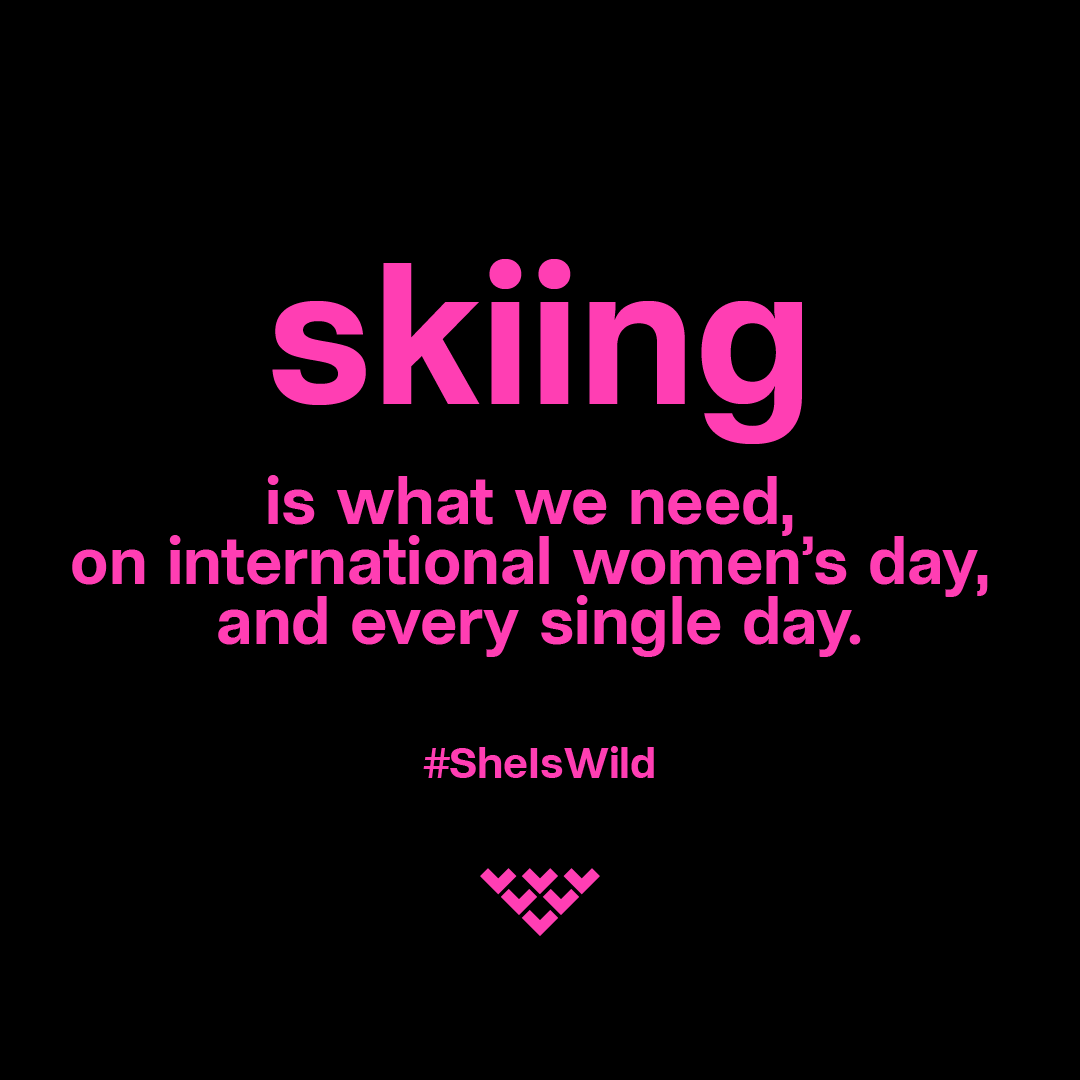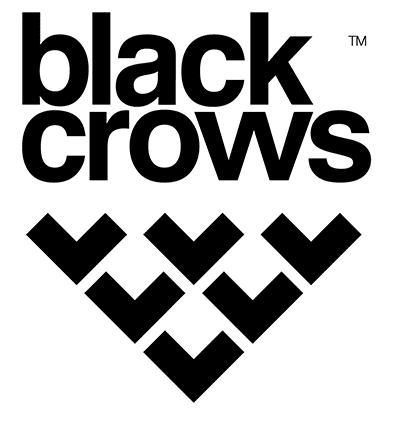The Canadian skier joined the crows’ squadron with the ambition of opening up a new palette of his talents.
Destiny is a strange bird, what led Mark and Black Crows to be closer was the result of a coincidental updraft. Rewind the 16mm camera and go back more than ten years, when Mark was looking to track his way in the harsh world of professional free skiing. He found lodgings in Whistler with three accomplices, JP Auclair, Anthony Boronowski, and Julien Regnier. Today, even if the disappearance of JP has left us orphaned from the meeting of talent and grace, the two other accomplices from this happy household are today part of the crows’ squadron. Destiny, some believe in it, others not, but one thing is certain, we are mightily satisfied by Mark’s arrival.
BC: Hello Mark, now that the promotion of Ruin and Roses is behind you, what memories come up from the shooting ?
Mark:It’s a very different film for MSP with this desire to make a real storyline. They took a step up from what they were used to doing and I think people really appreciated it. It’s a great story line and beautiful cinematography and we had a really good Winter, so everybody was prolific in that environment.
BC: Where did you film ?
Mark:I was in les Arcs for a while and in Zermatt, so around Europe for a few weeks, then Revelstoke for 2 weeks, and then we went up to the …. and camped there for 2 ½ weeks. So yeah, it was a ton of fun man.
BC: Concerning your background, can you sum up your steps into professional skiing ?
Mark:yes sure. So… I grew up at Hemlock Valley, a small ski hill in the Douglas Range in BC, it’s an hour and a half from Vancouver, just kind of the opposite way from Whistler. There were two chair lifts, a 1000 vertical feet. Super cool hill, particularly because it has a lot of backcountry close to the resort. And so, from a very early age, I started to go over the ski boundary ropes and hike in the backcountry to find some fresh snow. It’s a low elevation resort, so sometimes you get good snow but sometimes you can get a lot of rain. The good thing is that it taught me how to ski in a lot of different conditions. So, I guess I got the bug for exploring and finding my own way from a young age. It was a really great place to learn. Back then, I wasn’t using any avalanche beacon or anything, but, ah, ah, it’s coastal and quite a low line so the snow is quite stable, so I think I was pretty lucky being a young ignorant.
Mark:Then you went into moguls ?
BC: Yes, I joined the local mogul team for BC. I did that for 3 years. I was just trying to get into the whole freeski movement. I was watching lots of videos, trying to learn what those guys were progressing the sport with and eventually I got sick of skiing icy moguls. So I moved to Whistler and rented a couch for a Winter, ah, ah, and really started ski bumming. I entered some small big air, slopestyle and half pipe competitions. I was working at a ski shop, coaching ski teams, and eventually signed for the US Open and the X Games qualifier and slowly made my way up to the competition rate. I did that for 3 or 4 years, just kind of grinding at it. And then, eventually, started to get some decent results in big air, slope and pipe, and then I got sponsored by K2.
BC: K2 was your first sponsor ?
Mark:K2 was my first major sponsor, before Fisher was giving me skis, but with K2, it’s the first time people pushed me in the right direction as far as filming goes and bringing me to the right competition. And that’s kind when I met Matchstick Production. So I think it was 14 years ago now.
BC: Do you recall how did this first meeting happened ?
Mark:I was at the Powder Awards and, during the Awards, Steve Winter came up to me and said “Hey, how would you like to do some heli skiing ?” Ah, ah. And of course it had been a dream for a very long time, and I was like “Yeah, sign me up man. I ‘ll do whatever I have to do.” So I went to Bell Coola that year and I felt pretty lucky because Matchstick was based in Bella Coola for 6 weeks and they had 3 different crews coming, 2 weeks at a time. So, the first crew came and they kind of got skunked and we were the second crew and I was there with Shane McConkey and Hugo Harrisson and Ingrid Backström, and we got really good snow and really good weather and we all skied a bunch and had a lot of great footage. Then the third crew came and they got skunked as well. So I felt really fortunate that I happened to be there during that period, because it was that year that catapulted me in the career I have now.
BC: Yes, sometimes, it just takes a little luck…
Mark:Yes totally, the right timing, And to be there with Shane and Hugo was really cool. It was Ingrid’s breakout year as well, so we were kind of the rookies, skiing under both McConkey and Hugo. So McConkey was helping us steering in the right direction, meanwhile he was already ski basing back then. So I could watch him hiking up a 5000 feet cliff and say why not, ah, ah, pretty surreal experience. That kind of forever changed my perspective on skiing and I never went back to competition after that.
BC: Julien Regnier told me you were roommates in Whistler with JP Auclair and Anthony Boronowski, was it before that ? How did it happen ?
Mark:Yes, that was before I went to Bella Coola. I have known Anthony for a long time and he really took me under his wing and invited me to live in a house with him. And even though he is younger than me, he took me in as his prodigy almost and we went to Superpark and Parkasaurus together. He introduced me to Johnny from Poor Boyz and I guess it’s him that kind of saw that I had some potential. Anthony then invited me to live with all those guys which was another amazing opportunity. And when Anthony wasn’t in town I could go hang out with JP and Julien. And I distinctly remember JP showing me how to build a really nice backcountry jump. And those guys had to struggle while I was learning to snowmobile and getting stuck all the time. And at that point I wasn’t making any money in skiing and they knew that so, if they went traveling while I was back home, they would let me use their snowmobiles, which was huge. And that allowed me to film for Poor Boyz that year. That was a huge help.
BC: You were among the leader of backcountry freestyle and starting to stomp tricks in big lines, do you see yourself as a pioneer ?
Mark:I may be one of the guy that started this transition, but I think CR Johnson was really the guy doing it first. There was a whole movement back then and I was just a part of that movement. I think there was just a lot of energy. Everybody wanted to do it and there was a lot of us building kickers and even Seth (Morrison, Editor’s note), for that matter, was sending huge back flips out of natural features. So yeah, I would just say that I was part of the movement but not leading it necessarily.
BC: Sometimes it just takes one picture or one segment to make a name of yourself… Do you have any memory of a moment like this ?
Mark:It was that year when I went to Bella Coola to shoot Yearbook for Matchstick Production. I finally had the chance to do some backcountry skiing which I think had always been my true falling. That’s when I really discovered myself through skiing. That was also that year that I became skier of the year, which really established myself in the ski community.
BC: This best male performance in 2005 for Yearbook, was it a total surprise ?
Mak : I think I did have faith in my abilities and I think that’s important for anybody trying to achieve. But it was a shock for myself realizing all of a sudden I was at the same level as the people I had been looking up to for so long. And really, it was truly an honor to be there. But because I won an award, I never thought myself as being the best. I just realized that I was lucky that year. The place I went to had great conditions and I was with a great crew and it’s just like the stars were alined at that particular moment.
BC: From Salomon to Black Crows, it’s a French story and also sounds like a new step in your carreer.
Mark:Ha ha, yes, it’s funny this French connection. And concerning the step to big mountain, I feel like I am just getting my feet wet. I have been ski touring but I have not really made the step to big glacier travel and big descent like I did in Alaska this year. That was an amazing experience, how much slower the whole process is and how much I appreciate that slow process. When you are in a helicopter, everything is rushed and everything is expensive, whereas, all of a sudden, you are in the opposite perspective. The trip doesn’t cost as much and you are at the bottom of the valley. It’s much more challenging. Generally, your hike takes 4 to 5 hours and by the time you make it back to the camp after one run, you feel very satisfied already as opposed to helicopter skiing where you try to get as many laps as possible, it’s like gluttony. When you are hiking you are getting so much more experience through the approach, checking the stability and working as a team through the hike. Then you get at the top and skiing down is like the icing on the cake. There is so much more effort that goes in to achieving that one run you are going for, so by the time you are done with that, your cup is full. You had such a satisfying experience that you feel ok just doing that it once and saving your energy for the next day. It’s a wonderful experience. And I guess you also have a lot of time to think about life, ah ah.
BC: What black crows skis have you been skiing on?
Mark:Mostly the Anima, because it’s the ski corresponding to my type of skiing. Large, double rocker, extented sidecut… The perfect ski for all kind of powder conditions. But I also tried the new Nocta and when I first got on it, it was a transformational experience for me. Having a full reverse camber really allowed me to slide sideways, go from forward to switch, and really changed the way of seeing my descent. It was the most playful powder ski I have ever been on. But you need powder, that’s what they have been designed for. And then they float unbelievably. You should have seen the smile on my face when I was playing with that ski !
BC: You have this image of an environmentalist skier with a truck running on oil and an organic restaurant, can you enlighten us on this ?
Mark:Yeah, my truck runs on deep fried oil. It’s basically the oil people use for making French fries or deep fried chicken. So I go to these restaurants and I collect the old oil, bring it home and clean it with a little filtration system in my garage. It’s a very simple process. Then I have a secondary tank and I put this fuel in that specific tank. It’s really good for your vehicle, it smells great and produces 98% less CO2 emissions than a diesel. So it’s better for the environment, and it’s free. Everytime I switch to vegetable oil, I have this big smile on my face. That’s really good.
BC: And about your organic restaurant ?
Mark:Yes, I have a restaurant located on a farm in Pemberton, my home town, it’s called Solfeggio and we serve organic food. Lots of our products come directly from the fields right next to our kitchen, and if there are any food scraps, it goes to the pigs, the chicken and the goats. So it’s a really great full circle program.
BC: Why Solfeggio ?
Mark:Solfeggio is the ancient harmonic scale. All our frequencies, ABCDEFG play at a different frequency. Basically these frequencies are supposed to help your body, so you can use it for sound therapy. It’s based on the same principles. Everything, either sound or light, is made up of different frequencies and your body also resonates to these sounds and lights.
BC: And what is this geodesic dome story ?
Mark:I bought it online and I initially set it up in the backcountry and we used it to film Days of my Youth. So we had it sat there for three weeks and it’s a really cool structure. It’s very portable, you can set it up in one day, take it down in a half day. It’s incredibly strong and can support a lot of snow load, and it’s designed to be lived in. So, basically you can put it on the back of the pick up truck or move it by helicopter and move it to any location. I had set it up in my backyard for two years and I had some of my family living in there, and now I am trying to figure out the next place where I want to move it.
BC ; Sounds a bit like Burning Man your environment…
Mark:Ah ah, I haven’t been to Burning Man yet, I was hoping to go this year but I went to Argentina instead. In British Columbia, we have some similar festival but smaller, and same kind of people, same kind of music, very art influenced. It’s the kind of place where you can crack yourself wide open and everybody can communicate through the art. There is not the pressure of modern day society and out there you can be whoever you want to be. That’s a fun experience. You can dress as you want or wear no clothes at all. And nobody is there to judge you.
BC: What is your program for the coming months ?
Mark:I will do some renovations. I have a rental building and there has been a flood there so I will be doing some work there. And I hope to go to Bahamas and Mexico for two or three weeks to do some kite boarding. It’s a beautiful sport, the power of the wind is incredible. And then after that I will go to Revelstoke to a place called Blanket Glacier Lodge. It’s a friend of mine that runs it and I hope to go for 3 or 4 weeks from the middle of November to the middle of December in order to get some teaching on avalanche and mountain rescue. So I also hope to do a lot of touring while I improve my mountain knowledge.
BC: Did you plan to come to Chamonix ?
Mark:Nothing planed but the door is open. We’ll see if it snows. Now I can see why people like Seth and JP spent time there, it just seems to be a natural part of the evolution of a skier. Cham is a great place to see who you really are. You just have to leave your ego at home. It’s bigger than you.
BC: Have you been before ?
Mark:Yes, just a few days but I was lucky to ski with Andreas Fransson and it’s still probably some of the best runs I ever had. You know, Aiguille du Midi, top to bottom, the classics. We also went to Helbroner and finished in Cham. It was really cool because the Aiguille seemed almost too scary, so, to be able to experience those couple of days with Andreas really opened my eyes to that way of skiing and, like I said, its a much slower process from what I am used to with filming. At least, when I was with him, we were not charging from top to bottom. Control matters and it was more like 1, 2, 3 tuns at a time and going from one part of the mountain to the next, with lot of communication all the way down. It was an eye opening experience for that type of skiing. So now, with a little bit of experience in Cham and a little bit in Alaska, I am really looking forward to come back and spend more time in Chamonix and continue to develop my skills and learn more.


